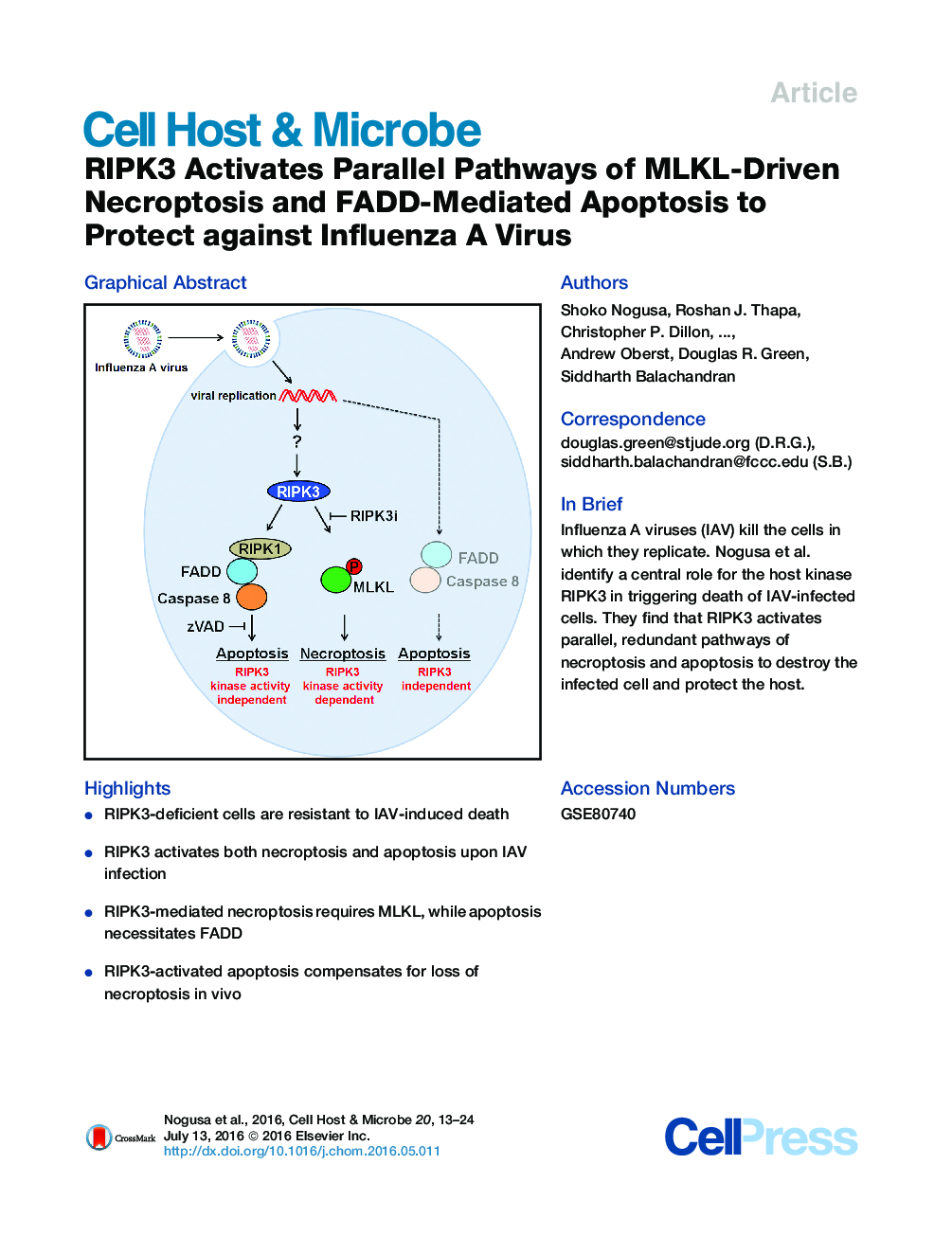| Article ID | Journal | Published Year | Pages | File Type |
|---|---|---|---|---|
| 4360809 | Cell Host & Microbe | 2016 | 12 Pages |
•RIPK3-deficient cells are resistant to IAV-induced death•RIPK3 activates both necroptosis and apoptosis upon IAV infection•RIPK3-mediated necroptosis requires MLKL, while apoptosis necessitates FADD•RIPK3-activated apoptosis compensates for loss of necroptosis in vivo
SummaryInfluenza A virus (IAV) is a lytic virus in primary cultures of many cell types and in vivo. We report that the kinase RIPK3 is essential for IAV-induced lysis of mammalian fibroblasts and lung epithelial cells. Replicating IAV drives assembly of a RIPK3-containing complex that includes the kinase RIPK1, the pseudokinase MLKL, and the adaptor protein FADD, and forms independently of signaling by RNA-sensing innate immune receptors (RLRs, TLRs, PKR), or the cytokines type I interferons and TNF-α. Downstream of RIPK3, IAV activates parallel pathways of MLKL-driven necroptosis and FADD-mediated apoptosis, with the former reliant on RIPK3 kinase activity and neither on RIPK1 activity. Mice deficient in RIPK3 or doubly deficient in MLKL and FADD, but not MLKL alone, are more susceptible to IAV than their wild-type counterparts, revealing an important role for RIPK3-mediated apoptosis in antiviral immunity. Collectively, these results outline RIPK3-activated cytolytic mechanisms essential for controlling respiratory IAV infection.
Graphical AbstractFigure optionsDownload full-size imageDownload high-quality image (181 K)Download as PowerPoint slide
